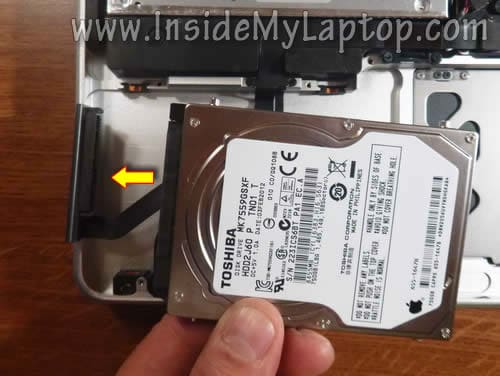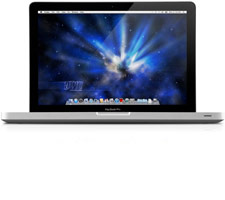

- MACBOOK PRO MID 2010 HARD DRIVE REPLACEMENT INSTALL
- MACBOOK PRO MID 2010 HARD DRIVE REPLACEMENT FULL
- MACBOOK PRO MID 2010 HARD DRIVE REPLACEMENT MAC
- MACBOOK PRO MID 2010 HARD DRIVE REPLACEMENT WINDOWS
MACBOOK PRO MID 2010 HARD DRIVE REPLACEMENT WINDOWS
Many users have report difficulties using the Boot Camp Assistant to install Windows when the APFS format is used. Many users have reported problems repartitioning their drives when APFS is in use. The Apple File System (APFS) was introduced with High Sierra. You will also have the option to select "APFS". Use the Disk Utility application to erase the HDD.

Release the keys when the Apple logo or a spinning globe appears
MACBOOK PRO MID 2010 HARD DRIVE REPLACEMENT MAC
Startup your Mac and immediately hold down the option+ ⌘+ R key combination. You're done with it.This answer is more tailored to your question. At this point, you can store your hard drive away or convert it to an external hard drive. Remove the four torx screws attached to the hard drive and set aside. Carefully wiggle the connector - not the ribbon itself - to disconnect it. You'll see that a SATA ribbon is attached to one end. To remove the hard drive, use the regular screwdriver to unscrew the two black screws belonging to the bracket securing the hard drive. Use a soft brush or gentle bursts of compressed air to release the dust and grime.
MACBOOK PRO MID 2010 HARD DRIVE REPLACEMENT FULL
I found that after years without cleaning, mine was full of dust. At this point, you might want to clean the inside of your Mac. When the cover comes off, touch a metal part to release the static electricity. Put them in a small container as you remove them they are easy to misplace. Remove your MacBook's back cover by unscrewing the tiny screws.

In case you missed it in the previous step, shut down your computer. When the process is complete, eject the SSD and shut down your computer. This could take anywhere from 30 minutes to a few hours, depending on how much you have stored on your hard drive. Then choose Backup All Files, and click Copy Now. If you gave it a new name in Disk Utility, it'll show up as such. Next, launch SuperDuper, and set it to clone your Mac's hard drive to the SSD. This will format the drive and prep it for the next step.

No need to change any settings, unless you'd like to give it a new name. Then, click the Erase button at the top of the window and then click Erase. Once it's connected, launch Disk Utility (searchable through Spotlight), and select the SSD from the left sidebar. Start by connecting the SSD to your computer with a dock or cable.


 0 kommentar(er)
0 kommentar(er)
